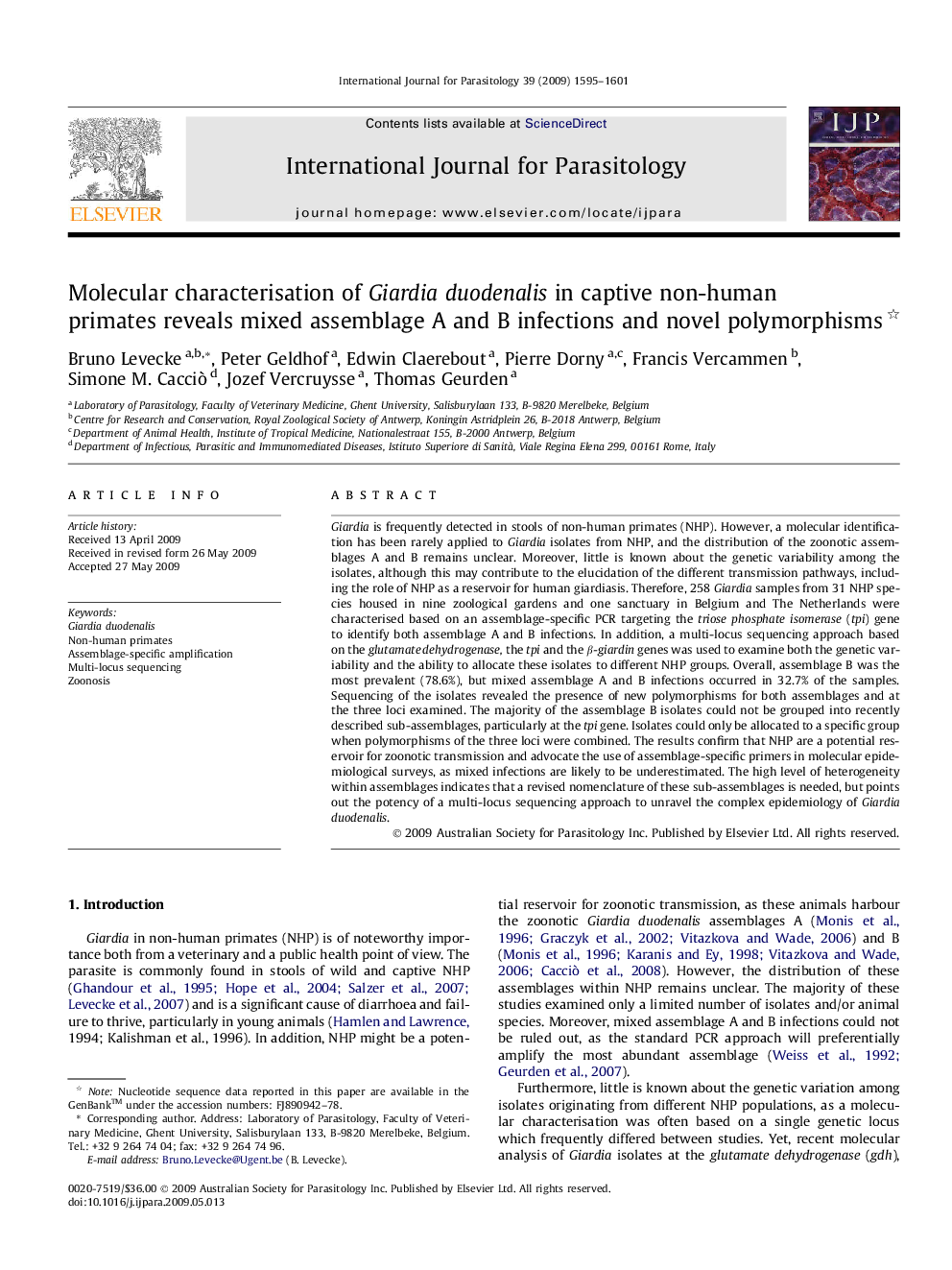| کد مقاله | کد نشریه | سال انتشار | مقاله انگلیسی | نسخه تمام متن |
|---|---|---|---|---|
| 2436680 | 1107339 | 2009 | 7 صفحه PDF | دانلود رایگان |

Giardia is frequently detected in stools of non-human primates (NHP). However, a molecular identification has been rarely applied to Giardia isolates from NHP, and the distribution of the zoonotic assemblages A and B remains unclear. Moreover, little is known about the genetic variability among the isolates, although this may contribute to the elucidation of the different transmission pathways, including the role of NHP as a reservoir for human giardiasis. Therefore, 258 Giardia samples from 31 NHP species housed in nine zoological gardens and one sanctuary in Belgium and The Netherlands were characterised based on an assemblage-specific PCR targeting the triose phosphate isomerase (tpi) gene to identify both assemblage A and B infections. In addition, a multi-locus sequencing approach based on the glutamate dehydrogenase, the tpi and the β-giardin genes was used to examine both the genetic variability and the ability to allocate these isolates to different NHP groups. Overall, assemblage B was the most prevalent (78.6%), but mixed assemblage A and B infections occurred in 32.7% of the samples. Sequencing of the isolates revealed the presence of new polymorphisms for both assemblages and at the three loci examined. The majority of the assemblage B isolates could not be grouped into recently described sub-assemblages, particularly at the tpi gene. Isolates could only be allocated to a specific group when polymorphisms of the three loci were combined. The results confirm that NHP are a potential reservoir for zoonotic transmission and advocate the use of assemblage-specific primers in molecular epidemiological surveys, as mixed infections are likely to be underestimated. The high level of heterogeneity within assemblages indicates that a revised nomenclature of these sub-assemblages is needed, but points out the potency of a multi-locus sequencing approach to unravel the complex epidemiology of Giardia duodenalis.
Journal: International Journal for Parasitology - Volume 39, Issue 14, December 2009, Pages 1595–1601